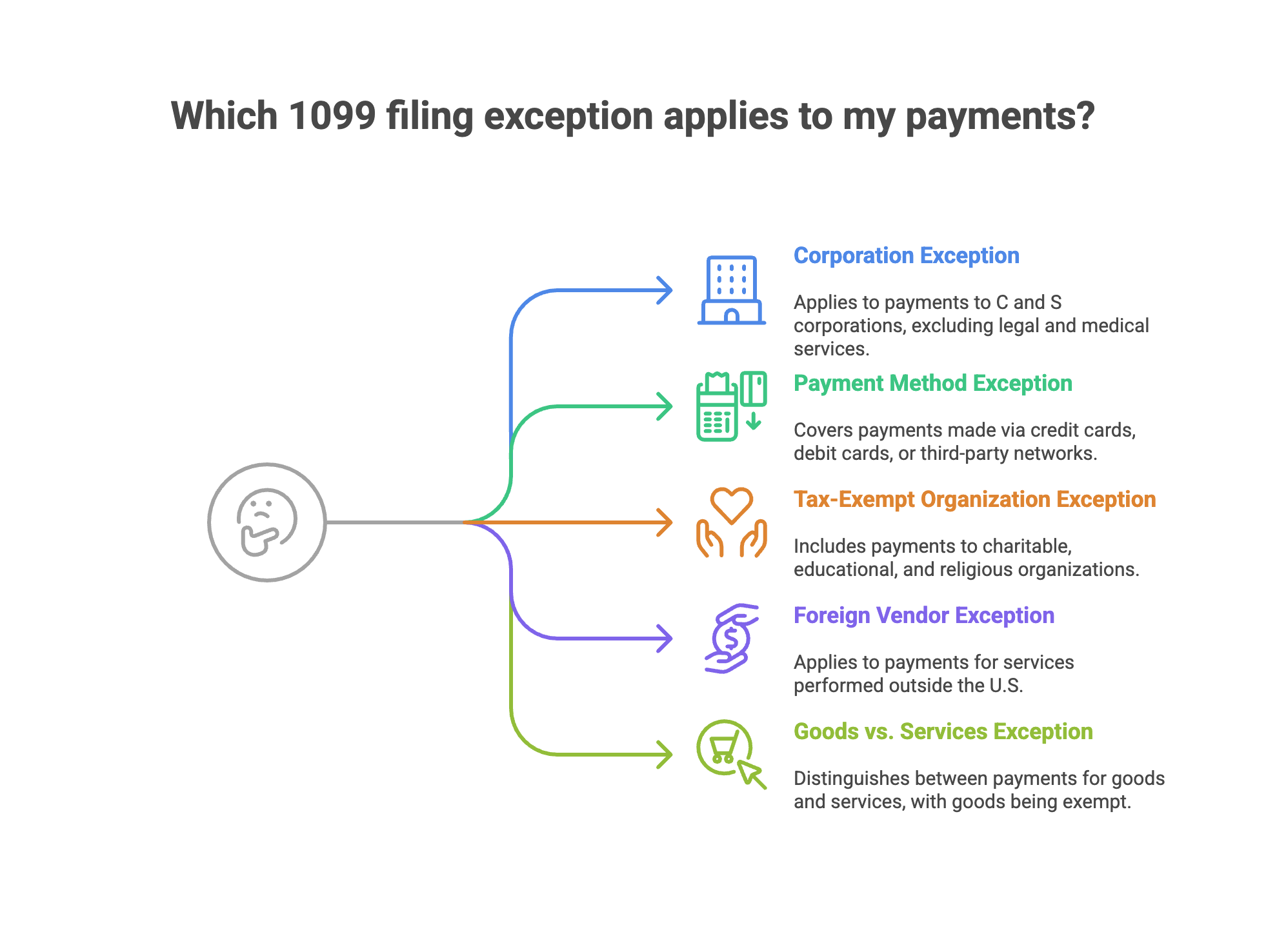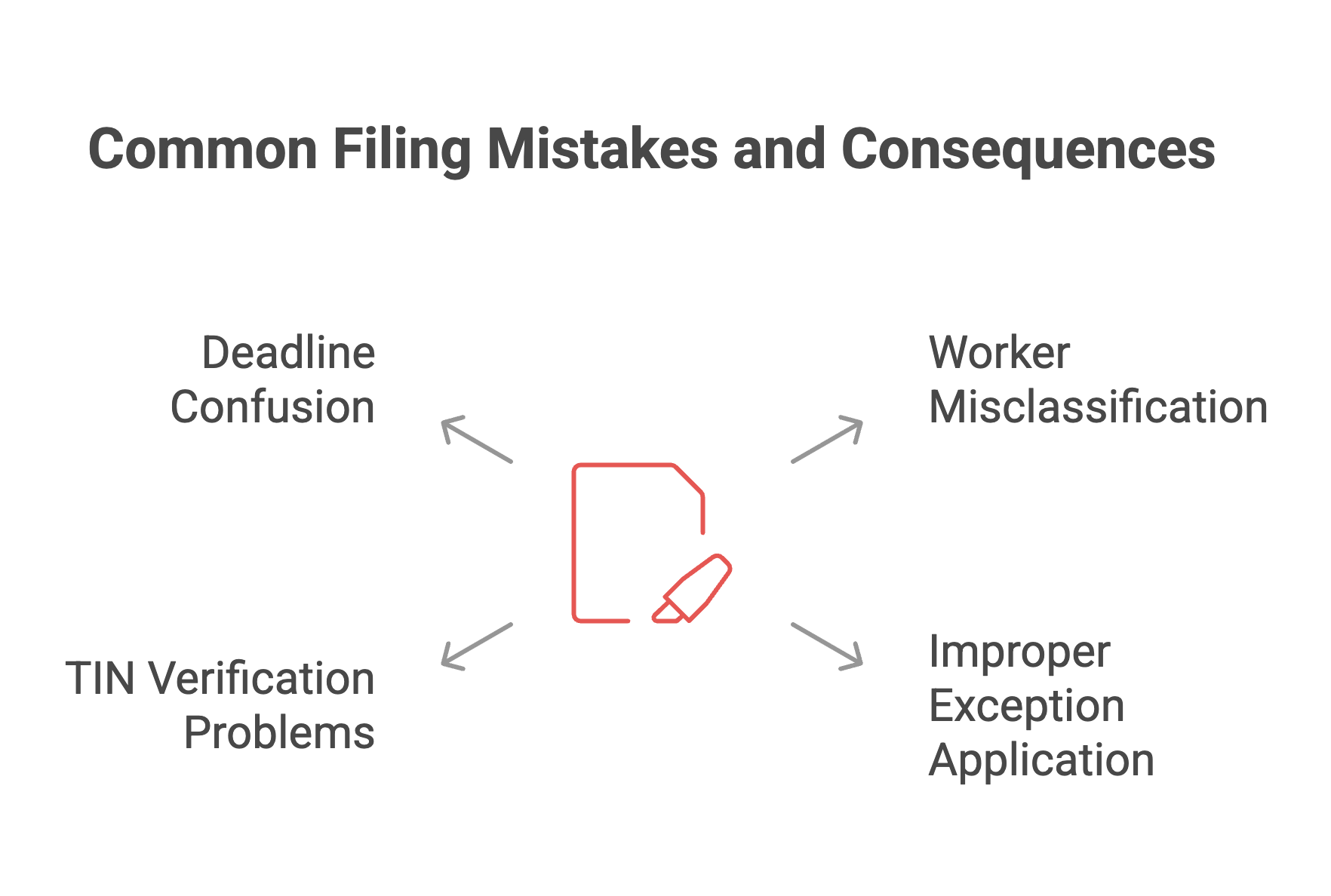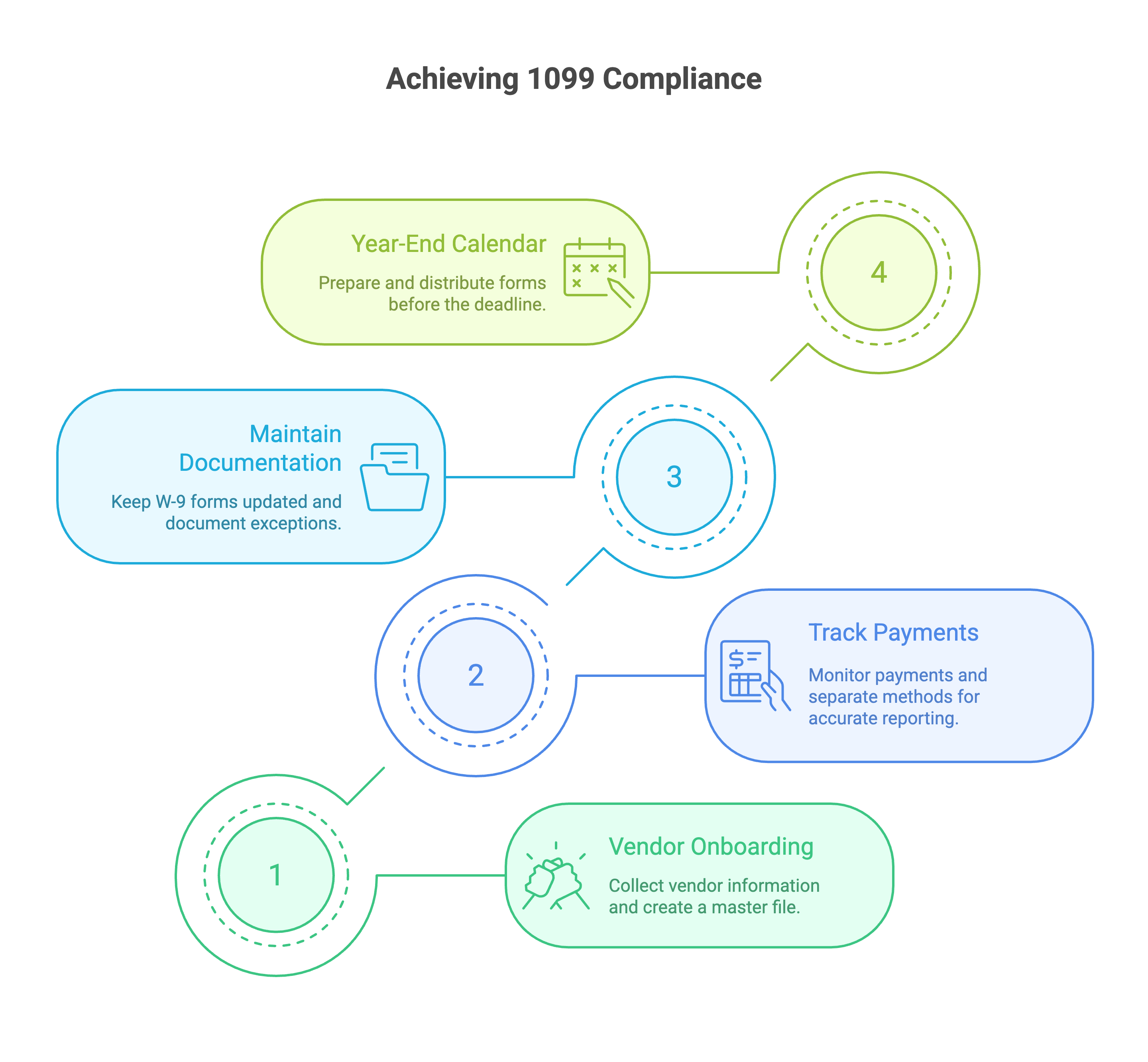Filing 1099 forms correctly can save your business from costly penalties while ensuring proper tax compliance. With IRS penalties ranging from $50 to $570 per form for violations, understanding 1099 filing requirements and exceptions is crucial for every business owner. This comprehensive guide covers everything you need to know about Forms 1099-MISC and 1099-NEC, including key exceptions that could reduce your filing burden.
The IRS reintroduced Form 1099-NEC in 2020, creating one of the most significant changes to contractor payment reporting in decades. Understanding the distinction between these forms is essential for proper compliance.
Form 1099-NEC is used specifically for reporting payments to independent contractors and nonemployees for services performed in your business. This includes:
Key Requirements:
Form 1099-MISC continues to be used for various other payment types, including:
Key Requirements:
Understanding precise filing thresholds helps determine when forms must be submitted and when exceptions apply:
Important Note: Even small individual payments can add up. Twelve monthly payments of $50 total $600 for the year, triggering filing requirements.

Several important exceptions can eliminate the need to file 1099 forms, saving significant administrative time:
What qualifies: Payments made to C corporations and S corporations are generally exempt from 1099 reporting.
Important limitations: This exception does NOT apply to:
Documentation required: Properly completed Form W-9 confirming corporate status.
Credit card and electronic payments: Payments made via credit card, debit card, or third-party payment networks (PayPal, Venmo, etc.) are exempt from 1099-MISC and 1099-NEC reporting.
Why: These transactions are reported by payment processors on Form 1099-K, preventing duplicate reporting.
What qualifies: Payments to organizations exempt under IRC Section 501, including:
Documentation required: Form W-9 confirming tax-exempt status.
What qualifies: Payments to foreign vendors for services performed entirely outside the United States.
Alternative reporting: These payments may require Form 1042-S instead.
Documentation required: Form W-8BEN or W-8BEN-E from foreign vendors.
What's exempt: Payments for merchandise, inventory, freight, and storage are generally not reportable.
Key distinction: Services require reporting; goods typically don't.

The biggest risk involves incorrectly classifying employees as independent contractors. The IRS examines:
Consequences: Misclassification can result in penalties, back taxes, and employment tax liability.
Common errors include:
Issue: Missing or incorrect taxpayer identification numbers trigger IRS B-notices.
Solution: Use the IRS TIN Matching Program to verify information before filing.
1099-NEC deadline: January 31 (strict deadline, no extensions)1099-MISC deadline: January 31 to recipients, later deadlines for IRS filing

Collect Form W-9 before first payment: Obtain complete information including:
Create vendor master file: Flag vendors requiring 1099 reporting vs. those qualifying for exceptions.
Set up accounting system flags: Tag payments that potentially require 1099 reporting.
Monitor cumulative totals: Review vendor payment totals quarterly, not just at year-end.
Separate payment methods: Distinguish between check payments and credit card/electronic payments.
Keep current W-9 forms: Update vendor information every three years.
Document exception rationale: Maintain records supporting your decision to apply exceptions.
Verify TIN information: Use IRS TIN Matching Program when possible.
November: Conduct preliminary vendor review and identify missing information.
December: Validate proper application of exceptions and collect outstanding documentation.
Early January: Prepare and distribute forms before January 31 deadline.
Many accounting platforms offer integrated 1099 modules that:
Specialized solutions provide:
The separation of nonemployee compensation onto Form 1099-NEC created:
Current requirement: 250 or more information returnsFuture changes: Phasing down to 10 returns by 2024
New Department of Labor rules (effective March 2024) may reclassify some independent contractors as employees, affecting 1099 vs. W-2 reporting requirements.
State 1099 requirements often differ from federal rules:
Some states participate in Combined Federal/State Filing, while others maintain independent systems.
Research requirements for each state where you:
Late filing: $50-$280 per formIntentional disregard: Up to $570 per formMissing TIN: $280 per form
Understanding 1099 filing requirements and exceptions helps your business:
Consider professional assistance when:
Proper 1099 compliance requires understanding both filing requirements and available exceptions. By implementing systematic approaches to vendor management, payment tracking, and documentation, your business can navigate these requirements efficiently while avoiding costly penalties.
The key to success lies in preparation: collecting proper documentation, tracking payments throughout the year, understanding applicable exceptions, and maintaining organized records. These practices transform 1099 compliance from a year-end scramble into a manageable, ongoing process.
As regulations continue evolving, staying informed about changes affecting 1099 requirements helps ensure continued compliance. Whether you're handling a few contractor payments or managing complex vendor relationships across multiple states, the strategies outlined in this guide provide a foundation for effective 1099 compliance that protects your business while optimizing administrative efficiency.
Remember: proper application of 1099 exceptions not only reduces filing burden but also minimizes compliance risk. By understanding which payments qualify for exceptions and maintaining documentation to support those determinations, your business can approach tax season with confidence and efficiency.
.png)
December 9, 2025
A straight-talking overview of five small business tax prep options in 2025, including Madras Accountancy, TurboTax, H&R Block, TaxSlayer, and Bench’s books-plus-tax model.

December 9, 2025
An on-the-ground guide to the UK’s fractional CFO ecosystem – London and beyond – including The CFO Centre, fin-house, FD Capital, BKL, BSmart, and how Madras Accountancy fits into cross-border and hybrid models.